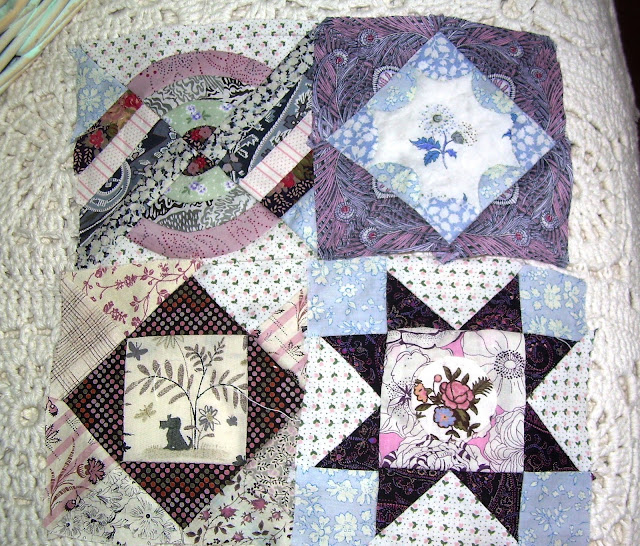Let me tell you a story? It all began a very long time ago when I saw this picture in a book -
The book was called
"A practical guide to patchwork from the Victoria and Albert Museum", now out of print of course, but you can buy it on Amazon UK for 1p plus postage! It has a few patterns of other quilts, but only this one picture of the Sundial coverlet. I didn't know much about patchwork when I first read it, but I was instantly taken with the way the maker has used fabric and thought it very clever. I also liked the colours and variety of the very pretty geometric dress prints, but combining them with black had saved the colour scheme from being too sweet!
Scroll on many years, by now I was teaching patchwork, quilting and embroidery and had just written my first book "House and Garden Samplers", I had made a special sampler for the cover and chose to depict a pink cottage orne because it was a house style that I had always admired.
Then, because I was teaching courses on patchwork houses, I made a patchwork version (see header picture above) intending to extend it into a sampler quilt. It didn't happen!
Last year in the Quilt Exhibition at the V&A Museum, I saw the Sundial Coverlet for the first time. It lived up to all my expectations and I decided that now was the time to do something based on it. I had a file of pictures and collected writings, I also had lots of fabric, so it was time to stop faffing about and get down to it. I didn't want to do a replica because, though I love the original I wanted it to be my own design. I decided to put my languishing pink cottage orne block at the centre and surround it with the small blocks from the Sundial Coverlet, to make my personal sampler quilt.
So far, I have found drafting the patterns and piecing them challenging. Some of the designs are simple but others are complicated and were designed to be paper pieced, so I have had to rethink my usual way of working. It has been the most demanding quilt project I have ever undertaken but stimulating as well. It is a complete change from my other life in quilting, as it couldn't be more different to making Welsh quilts.
I started this blog because I thought some of you might be interested in my progress so far but which has a long way to go. I will be writing regularly so please tune in again..





































